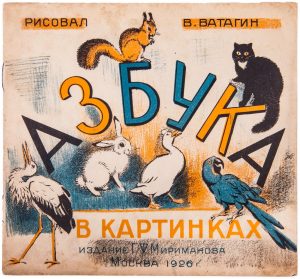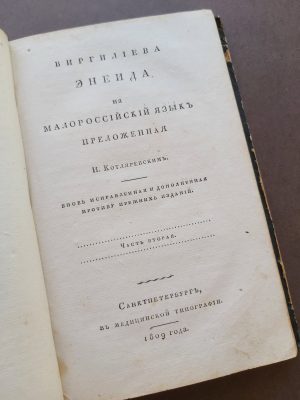Our Notes & References
Opening a new, important page in the history of Armenian printing: the first work printed by Mekhitar of Sebaste in Venice. Although Mekhitar would have already written “14 personal works and 27 translations as well as editions of religious works, hymns, and spiritual praises” (Cizacka) when he arrived in Venice, we could not find any printed trace, except an Armenian version of Kempis’ Imitation of Christ, published in Constantinople in 1701, which may partly contain Mekhitar’s input. This edition of Albert’s theology is in any case the first printed work mentioning Mekhitar on its title page, and could well be the first book he ever edited.
Mekhitar of Sebaste (1676 – 1749), one of the major figures of Armenian Enlightenment, founded his Catholic congregation in Constantinople in 1701. Persecuted by the Ottoman authorities, the Mekhitarist Order moved to the Greek fortress city of Methoni where they built a monastery and where Mekhitar worked on the translation of Saint Albert Magnus’ teachings, and thought of a publication.
St. Albert the Great (c. 1200 — 1280) was a Dominican bishop and philosopher, best known as a teacher of St. Thomas Aquinas and as a proponent of Aristotelianism. Alberts’s works represent the entire body of European knowledge of his time not only in theology but also in philosophy and natural sciences. As indicated in his manuscript, now located at the library of the Mekhitarist Congregation in Venice, Mekhitar wanted to use Albert’s teachings as a theological textbook. He writes in his foreword that his student Hovhannes Sebastatsi and himself made numerous corrections to the old Armenian translation made 400 years earlier by fellow Armenian monks.
In 1714, Mekhitar corresponded with a certain Noradoung Zakarian who lived in Venice but whom he had presumably met earlier in Constantinople. Noradoung suggested Mekhitar to publish the theology of Albert the Great in Venice, and this prospect appeared to be a very important event to the monk: indeed, he couldn’t complete this project for a long time, mostly due to persecutions on his order and lack of finances. The Ottomans invaded Methoni the following year and Mekhitar’s order fled to Venice – a city which was already well equipped for Armenian printing. There, Mekhitar got in touch with Sarkis Gosdantnoubolsetsi (= of Constantinople), who eventually helped him publish these two parts of Albert’s theology at Antonio Bortoli’s printing house: Sarkis is mentioned as a benefactor of the publication on the title page of the second part.
Bortoli’s printing house seemed to be the most important in Venice for printing Armenian books, as from 1695, “Antonio Bortoli held the privilege for printing in Armenian and already had been printing several titles in Armenian for a few years” (Lucca, 148; our translation). In 1713-14, Bortoli published a revised Armenian translation of the Dominican breviary by friars Petros Pehluan and Grigor Guliar and a short catechism in 1715. The printing of Mekhitar’s first project at Bortoli’s typography commenced their prolific and groundbreaking collaboration, which would give light to all Mekhitarists’ major books.
Mekhitar himself supervised directly the printing of Albert’s theology and the final corrections, while Sarkis took care of the distribution and sale of the books. According to Sahag Djemdjemian’s study of Mekhitarists’ publications, the total cost for printing the compendium was 470 ducats for 1450 copies. Two thirds of the publication expenses were paid by Sarkis, who kept 800 copies of the edition, whereas Mekhitar owned 400 copies, covering the remaining third of the total cost. As Djemdjemian notes, this publication closes the period of Mekhitar’s work in Methoni and opens the period of his Venetian printing career.
The production of St Albert’s theology is of fine, elegant quality: printed on strong Italian paper, with many elaborate woodcut initials of floral motives showing a very attractive, modern, almost art-nouveau style.
Established in 1717 on the island of San Lazzaro near Venice, the Mekhitarist Congregation began intense textual production and became the world’s most important place for Armenian studies, leading to the revival of the Armenian language and culture worldwide. The publication of the Compendium of St Albert’s theology was immediately followed by Krt’ut’iwn aghot’its’ (Mekhitar’s Instruction on Prayer) in 1718 and Partez hogevor (Spiritual Garden) in 1719, before the Mekhitarists’ major works, such as a new translation of the Bible (1733) and the Bargirk ‘Haykazian lezui (Armenian language vocabulary), printed in 1749.
Very rare. Apparently only one example in the US (Columbia University although it is wrongly dated (1785) in their catalogue); a few copies traced in Armenia, and 6 in Europe (Maastricht and Amsterdam Universities, Bayerische Staatsbibliothek, Staatsbibliothek zu Berlin, Dudian House of Culture in Bucharest, and Russian State Library in Moscow).
We could not trace any example at auction in recent decades.
Bibliography
Lucca, Paolo. La traduzione armena del breviario domenicano (Venezia 1714). Note di storia, codicologia e bibliografia testuale. Università Ca’ Foscari Venezia, Italia, 2016, pp.142-148.
Cizacka Defne, “San Lazarro: A Third Space of Armenian Enlightenment and Ottoman Royalties”. // Goldwyn, A.J., Silverman, R.M. Palgrave, Mediterranean Modernism: Intercultural Exchange and Aesthetic Development. Macmillan US, 2016.
Djemdjemian, Sahag, Mxit̕ar Abbahòr hratarakčakan aṙak̕elowt̕iwnë [Abbat Mekhitar’s Publishing Mission] / Sahag Jemjemian; Preface: H. P. Rev. Fr. Ananian. Venetik : Mxitarean Hratarakowtʹiwn, 1980.
Physical Description
Two parts in one volume 8vo (17 x 11.5 cm). 680 pp., incl. title page of each part and a full-page woodcut, woodcut head- and tail-pieces, anthropomorphic woodcut initials, and other initials with floral ornaments on black background.
Binding
Full contemporary brown sheep, flat spine with gilt decorations and no lettering, patterned pastedowns of papier dominoté, speckled edges.
Condition
Binding with a few wormholes, a bit rubbed and stained, spine a bit faded, small areas of abrasion, without flyleaves. Block with a few wormholes and tracks, mostly marginal, a few leaves with a couple to a handful of letters affected, very light staining to first leaves; but overall in very good condition, fresh and crisp.

![Image for ALBERT & MEKHITAR. Mec Alpert [Compendium of Theology of St. Albert]. First edition, Venice, 1715-16. #2](https://www.pyrarebooks.com/wp-content/uploads/2024/01/2066_1.jpg)
![Image for ALBERT & MEKHITAR. Mec Alpert [Compendium of Theology of St. Albert]. First edition, Venice, 1715-16. #3](https://www.pyrarebooks.com/wp-content/uploads/2024/01/2066_2-scaled.jpg)
![Image for ALBERT & MEKHITAR. Mec Alpert [Compendium of Theology of St. Albert]. First edition, Venice, 1715-16. #4](https://www.pyrarebooks.com/wp-content/uploads/2024/01/2066_3-scaled.jpg)
![Image for ALBERT & MEKHITAR. Mec Alpert [Compendium of Theology of St. Albert]. First edition, Venice, 1715-16. #5](https://www.pyrarebooks.com/wp-content/uploads/2024/01/2066_4-scaled.jpg)
![Image for ALBERT & MEKHITAR. Mec Alpert [Compendium of Theology of St. Albert]. First edition, Venice, 1715-16. #6](https://www.pyrarebooks.com/wp-content/uploads/2024/01/2066_5.jpg)
![Image for ALBERT & MEKHITAR. Mec Alpert [Compendium of Theology of St. Albert]. First edition, Venice, 1715-16. #2](https://www.pyrarebooks.com/wp-content/uploads/2024/01/2066_1-300x400.jpg)
![Image for ALBERT & MEKHITAR. Mec Alpert [Compendium of Theology of St. Albert]. First edition, Venice, 1715-16. #3](https://www.pyrarebooks.com/wp-content/uploads/2024/01/2066_2-300x400.jpg)
![Image for ALBERT & MEKHITAR. Mec Alpert [Compendium of Theology of St. Albert]. First edition, Venice, 1715-16. #4](https://www.pyrarebooks.com/wp-content/uploads/2024/01/2066_3-300x400.jpg)
![Image for ALBERT & MEKHITAR. Mec Alpert [Compendium of Theology of St. Albert]. First edition, Venice, 1715-16. #5](https://www.pyrarebooks.com/wp-content/uploads/2024/01/2066_4-300x417.jpg)
![Image for ALBERT & MEKHITAR. Mec Alpert [Compendium of Theology of St. Albert]. First edition, Venice, 1715-16. #6](https://www.pyrarebooks.com/wp-content/uploads/2024/01/2066_5-300x400.jpg)



